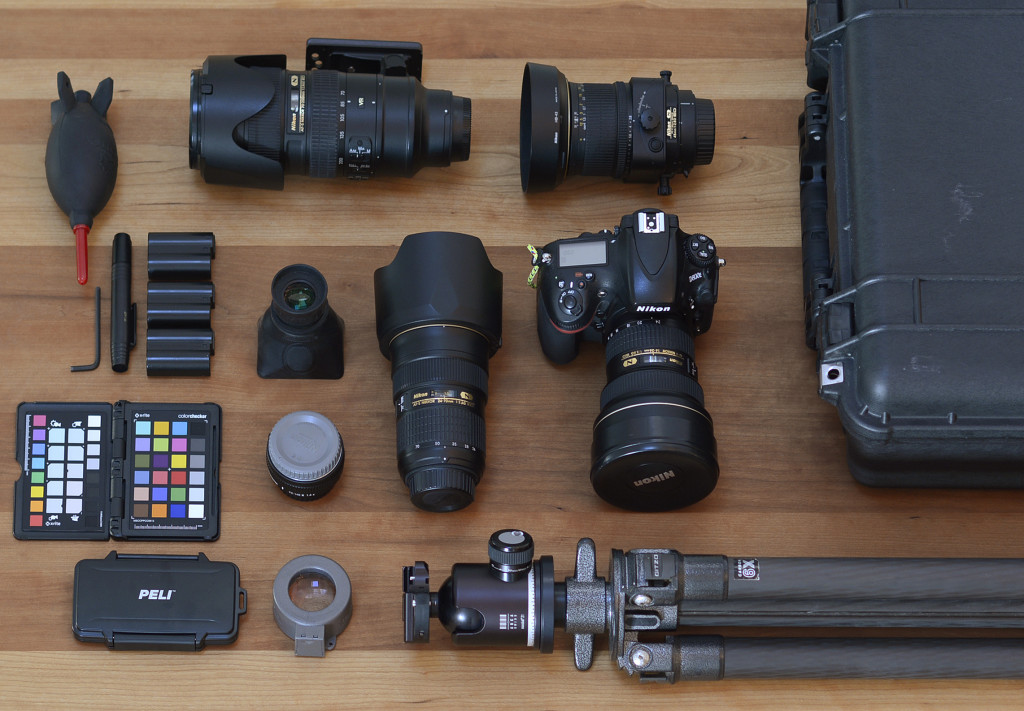I am on the road (trek) for more than four weeks around the Annapurnas in Nepal. If it was only for the mountains, I could stay in the Alps and actually climb some of them. In the Himalayas the peaks are higher and their faces larger, which is, however, difficult to convey in a photograph. There is simply a lack of scale.
What keeps dragging me into the Himalayas are ethnical diversity, architecture, culture, and high-altitude wilderness. Moreover, there is this fascinating, rapid change in the way people live in the remote mountain areas. From no access to electricity, phone and television, to wireless Internet and smart-phones in less than a decade. On this trip it will also be interesting to study the change brought about by the recent construction of the road in the Annapurna region. Indeed, there are a lot of very different subjects for a photographer.
So what do I bring, and why?
First off, it’s not a bag but a case. One of the problems I encountered was my large LowePro pack exceeding carry-on restrictions on smaller airplanes. Therefore I opted for the 1500 Peli case that is relatively compact and pretty much indestructible. I chose the padded divider system over the foam because of increased flexibility. The case is equipped with a pressure valve, supposedly to survive reentry from space or ascend to Mt. Everest. Peli advertise that you can drive a car over their cases, and that they float with all the equipment loaded. I have no doubts; during my last trip to the Khumbu region my case (and equipment) survived an attack by a yak.
For the first time, the equipment is all digital as there is a limit in what can be schlepped over mountain passes. The image quality of the D800E, rivaling 4×5 film (at least for prints smaller than A2, i.e., 17 x 23” or 40 x 60 cm), the high dynamic range, low-light ability, the flash system, and the continuous range of 14–280 mm focal length, enlarges the shooting envelope.
I love prime lenses, lust after the Zeiss Otus lenses (Oti?), and enjoy using the 45 and 85 mm Nikon PC-E tilt/shift lenses. But for this trip I rely on the “holy trinity” of zoom lenses. Having shot exclusively with large-format equipment and having been limited to four lenses of 27, 42, 89, and 149 mm equivalent focal length, I know what it means to “zoom with the feet”. At some occasions I ended up on the middle of the road or had to crop because I could not risk falling off a cliff. But even without such constraints, changing the camera to subject distance yields a different perspective; zooming with the feet is therefore not strictly possible. So here is what I haul:
- Peli case 1500: Carry-on size, fits the camera body plus the holy trinity and two prime lenses as well as some smaller accessories.
- Nikon D800E: Only one body, which is a risk. But the upgrade to the D810 is so incremental that I will give it a miss. Possibly a D8XX will be worth upgrading to and will render the D800E a backup body. On this trip I must count on the camera’s reliability; fingers crossed.
- Nikon 14-24 f/2.8: A handsome, solid lens, which is sharp already wide open and certainly the best wide-angle zoom lens on the market. Cannot hold filters, so some care must be taken in a harsh environment.
- Nikon 24-70 f/2.8: At the ends of the zoom range, the lens is slightly worse than the other two of the trinity. Very versatile though, great performer at f/5.6. Very solid lens hood but no vibration reduction. Makes nice sun-stars when stopped down.
- Nikon 70-200 f/2.8: My preferred lens for portraits (with a setting at 150 mm and f/5.6). Looks a bit aggressive due to its form factor and gives the impression as if there was something to be compensated for. Handheld, it requires at least 1/(3*f) in shutter speed to avoid motion blur, even with the VR on.
- Nikon PC-E 45: The sharpest Nikon lens in the case. Manual focus only, but tilt and shift to boot. Great lens for stitching two images and for increasing the depth of field without hitting the diffraction limit. Easy to use when experience from large-format equipment is present.
- TC 14-III teleconverter: 190 grams to increase the reach of the 70-200 f/2.8 VR II. Not compatible with the PC-E lens though. Effect on image quality is masked within the variation of the zoom lens.
- LensPen and Giotto Rocket blower for brushing and blowing off dust. VisibleDust loupe to inspect the sensor, Peli case for CompactFlash cards, HoodLoupe 3.0, and x-rite color checker. Three spare batteries, using live view the D800E sucks them dry like no tomorrow.
- Gitzo Series 2 6X carbon tripod, the “mountaineer,” equipped with the Arca-Swiss Monoball Z1 head. Wimberley mounting plates for the 70-200 lens and camera. Although the head weighs only 680 grams, it is rated for 55 kg off-axis. I don’t know how this was measured but so far there is nothing to complain about. I equipped the Monoball with the Flip-lock release plate. Indeed, this setup works with plates from different manufacturers because the release plate can be adjusted with a screw. But mixing plates may result in a loose setup. For example, a Wimberley lens foot and a Novoflex L-bracket have slightly different lateral dimensions, so I had to exchange the L-bracket against Wimberly quick release plates for the camera. The standard screw-knob would have been a more versatile solution.
